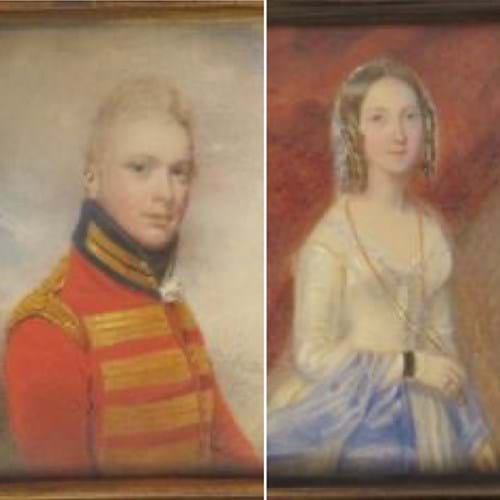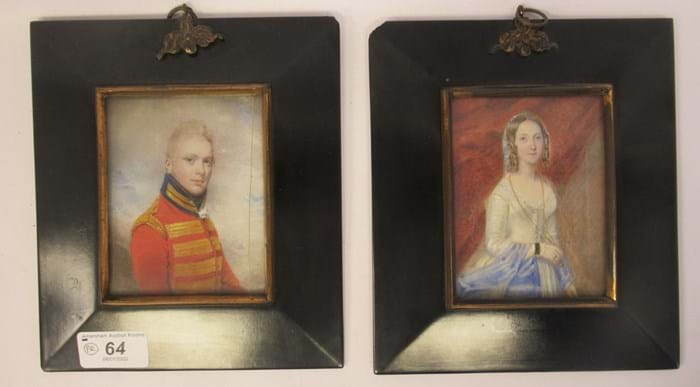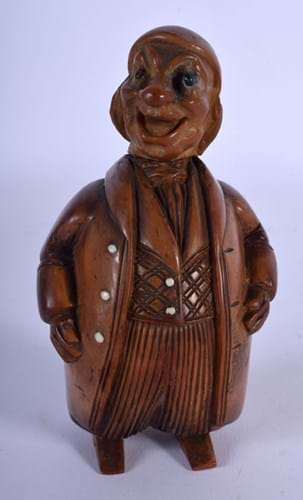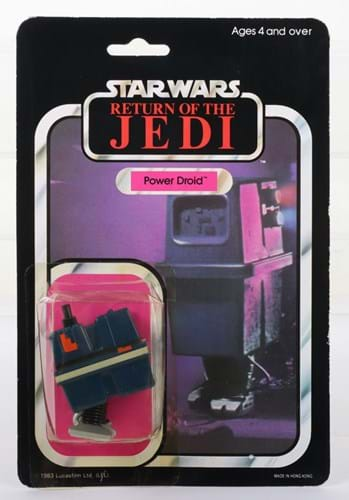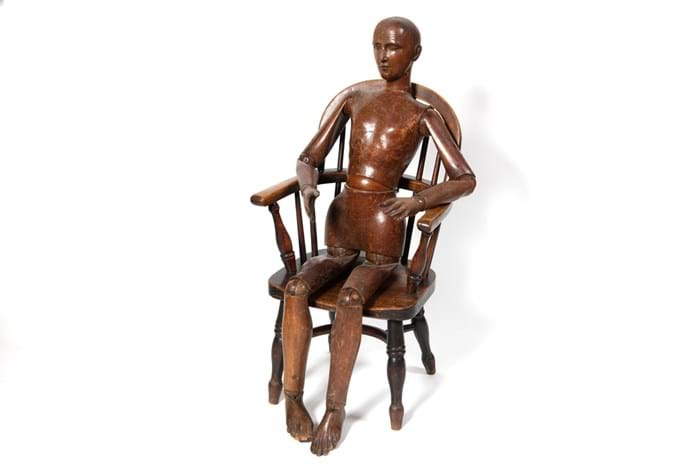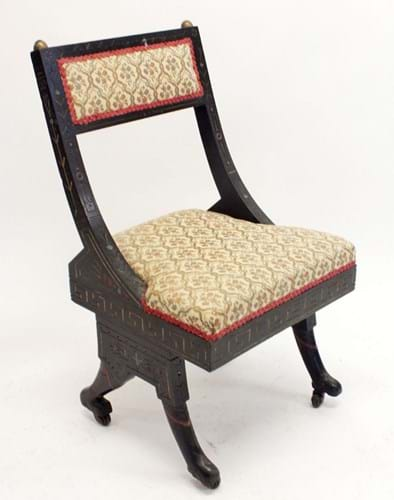1. Georgian portrait miniatures
Estimated at just £60-80, this pair of Georgian portrait miniatures sold for £2900 at Amersham Auctions in Buckinghamshire on January 6. Painted in watercolour on ivory, one (with a significant crack to the right of the image) depicts a soldier in the red and gilt braid frock coat of a British army office, the other a woman with ringlets in her hair who clutches a gold guard necklace. Although not catalogued as such, both images were signed on the backing card for William Wood of Cork Street, London with the male subject identified as John Jebb Esq.
Wood is one of the more inventive miniaturists of the period and his work is quite distinctive. He is known to have been working from Bristol in 1791 and 1803 and from Gloucester in 1798 but was based in London for much of his career. As well as portraits, Wood also painted subject miniatures.
2. Coquilla nut snuff box
By the early 19th century the coquilla nut had been ‘discovered’ by British craftsmen as a suitable medium for carving. The influential taste-making journal Ackermann’s Repository of Arts, Literature, Commerce, Manufactures, Fashions, and Politics sung its praises in 1812. “The uncommonly pleasing colour of the shell, the hardness and the native mottle which appears when it is highly polished, renders it capable of being employed, with the most agreeable effect, as it is susceptible of the most tasteful forms. Whatever has been formed from ivory, may be produced from the shell of the coquilla, whose beauty will not fail to attract, while the price of the article will satisfy the purchaser.”
The signature coquilla carved trinket was the snuff box, and particularly the comical ‘nut men’ made in northern Europe in the first half of the 19th century. Most depict caricatured European ‘types’. Typically these are sold in the £300-500 bracket but the best examples, often with details picked out in bone, can bring significantly more. The box here of a rotund gentleman with a beaming jocular face took £1500 (estimate £100-150) at Hannams in Selbourne on January 4 selling to a buyer via thesaleroom.com.
3. Palitoy droid action figure
Although extremely important to the Star Wars galaxy, the ‘power droids’ used to recharge vehicles and machinery, go almost unnoticed in the films. With little fanfare, these boxy mobile plug-in generators appear in all episodes of the 1977-1983 trilogy.
Power droid action figures were produced by Kenner in Ohio and Palitoy in Leicestershire for all three ‘classic’ Star Wars films although, upstaged by more iconic characters, they were sold in relatively small numbers.
Palitoy examples are particularly hard to find in their original packaging. This one made for Return of the Jedi came for sale at C&T Auctions in Kenardington, Kent on January 6 where, guided at £100-150, it took a surprise £1850.
4. Carved wood lay figure
Carved wood lay figures make for terrific decorative objects – guaranteed to enliven a range of interior spaces far removed from the artist’s studio. The best examples command very significant sums.
The figure pictured here measures 3ft 4in (1m) high, is fully articulated, particularly well carved and exhibits a good colour and patination. It came for sale at Greenslade Taylor Hunt in Taunton on January 6 from a family home where it had been for many years. The imperfections to the toes were blamed on a hungry family pet. Estimated at £300-500, it took £7000 selling via thesaleroom.com.
5. Aesthetic movement side chair
Although catalogued by Smiths of Newent as a chair from the early 19th century Empire period, ebonised mahogany, gilt and polychrome side chair is more probably from the mid Victorian period. It is likely among the Aesthetic movement chair designs created in the 1870s by Christopher Dresser for the Art Furnishers Alliance, the association of progressive home decorators he helped establish in 1880. George Hayter Chubb of furniture manufacturer Chubb & Co was appointed as chairman of the project that operated for only a few years from Queen Street in London before going into liquidation. The remaining stock was then either advertised by Chubb & Co or sold off at auction.
Dresser borrowed extensively from a range of ‘exotic’ sources to create his designs, this chair with its stylised palmettes and foliage reflecting his interest in Egyptian motifs as well as botanical forms. Its significance was recognised on January 6 with a winning bid of £3100, way above the £60-100 estimate.


